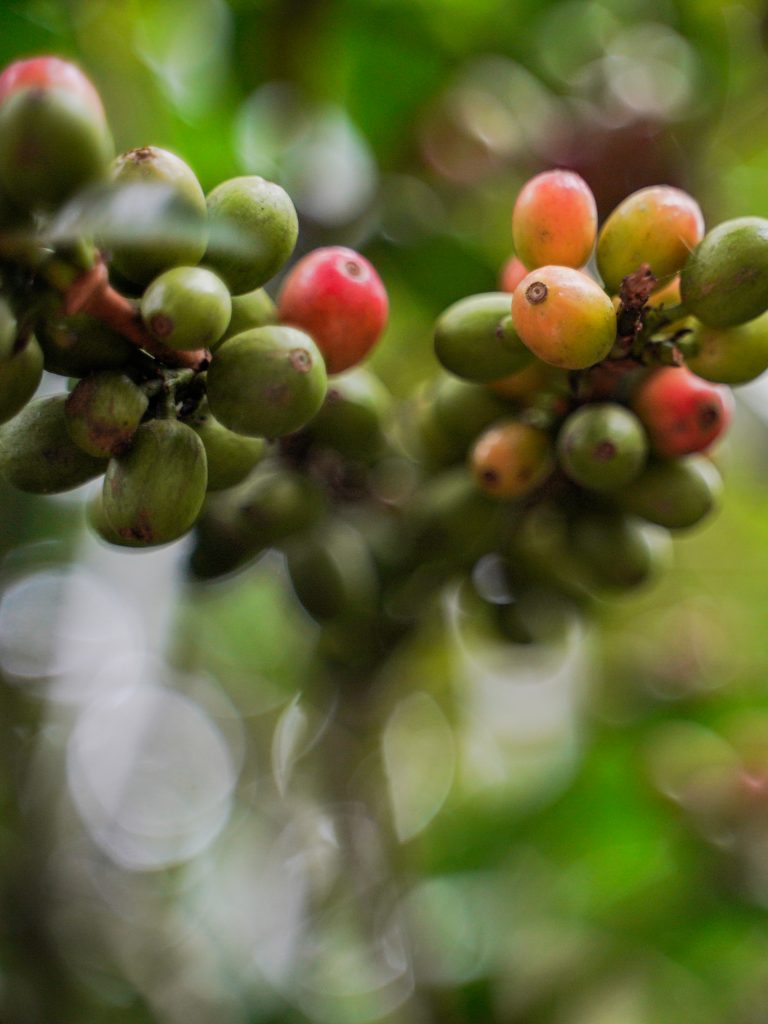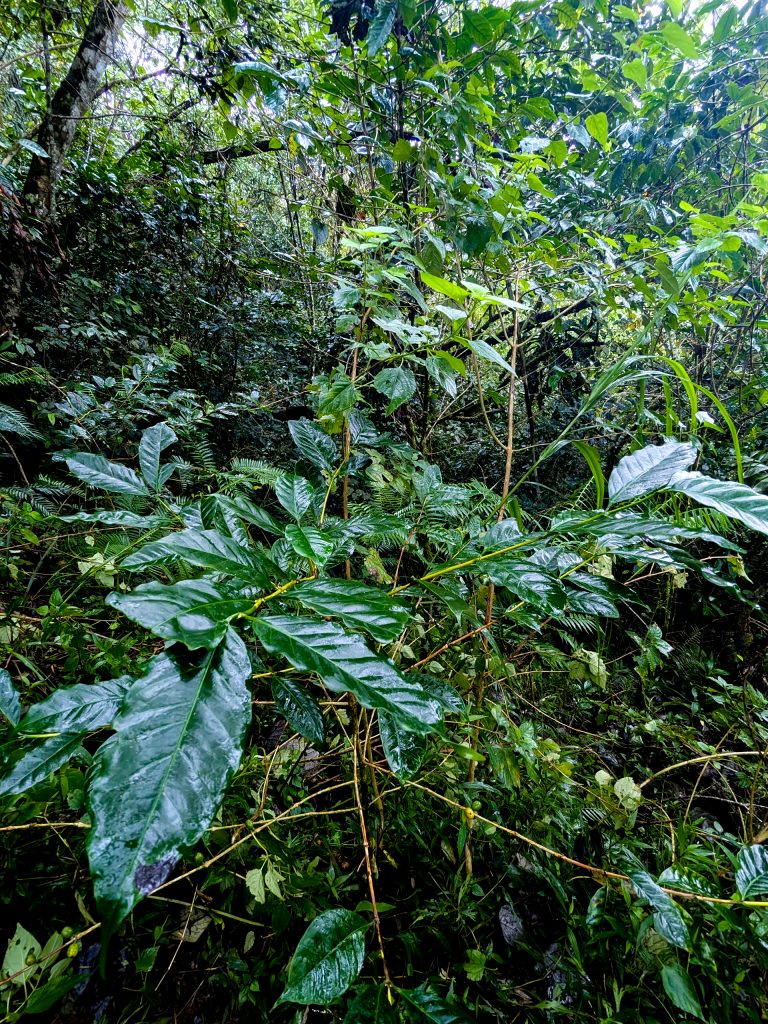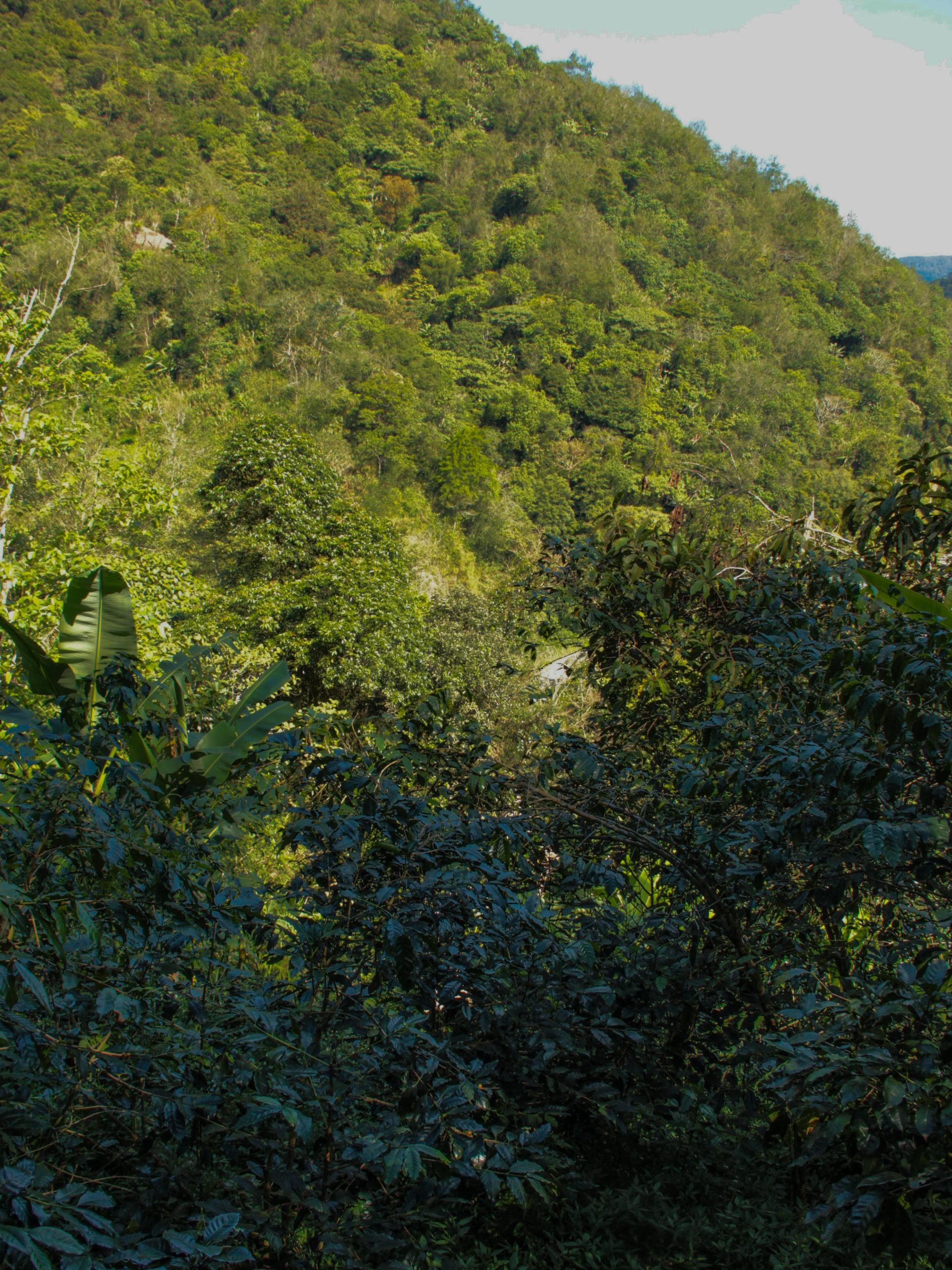This is part 4 of a 5-part series on Shade Grown, agroforsestry coffees.
Coffee Growth Within the Rainforest
Coffee does not exist in isolation. In a rainforest agroforestry system, it grows beneath a canopy of native trees and alongside diverse understory plants. Sunlight filters through leaves, temperatures are moderated, and soil nutrients cycle naturally. These conditions are not artificial—they are part of the living ecosystem in which coffee thrives.
Farmers, like other mammals, interact with the forest to support plant health without disrupting these processes. Their care—selective pruning, harvesting, and minor interventions—works within the system rather than overriding it.
Bean Density and Maturation
Coffee cherries ripen more slowly under rainforest conditions. Shaded and moderated by the canopy, plants experience a steady, balanced growth period. This slower development allows sugars, acids, and other compounds to accumulate fully, producing denser beans with richer chemical complexity.

The result is coffee that reflects its environment: structural integrity, depth of flavor, and consistency. Quality is not imposed by external inputs but emerges from the forest’s natural regulation of light, temperature, and moisture.
Acid Balance and Flavor Development
Rainforest conditions preserve the balance of organic acids in coffee cherries. Malic and citric acids persist longer, creating clarity and brightness in the cup. When coffee grows alongside diverse vegetation, temperature swings are dampened and ripening occurs evenly, allowing subtle flavor compounds to develop fully.
The forest ecosystem itself acts as a flavor partner. Plants, soil microbes, and canopy cover all contribute to chemical processes that shape the taste of the beans. Humans participate by harvesting at the right time, but the forest sets the stage for quality.
Herbal, Floral, and Tea-Like Notes
Secondary metabolites such as linalool, geraniol, and phenolic compounds flourish under steady rainforest conditions. These compounds give coffee herbal, floral, and tea-like notes that are prized in specialty markets. Higher elevations, intact canopy, and natural microclimates protect these delicate aromatics from degradation.

Flavor is therefore a product of ecological interaction. Coffee expresses the history of rainfall, forest cover, soil nutrients, and pollination, with farmers participating as one species within the system rather than imposing a controlled environment.
Brewing and Expression
Coffee grown in harmony with the rainforest responds predictably to brewing. Acidity, sweetness, and body are all shaped by the environmental conditions under which beans matured. Brewers gain more latitude to manipulate flavor because the beans carry nuanced chemistry that originates in the ecosystem itself.
The rainforest and its human inhabitants together produce coffee that tells the story of its habitat. Every cup carries evidence of ecological balance, from soil microbes to canopy trees to careful harvesting.
Conclusion
Quality coffee emerges from ecological harmony, not from external interventions. Coffee grown within rainforests under agroforestry benefits from moderated light, stable temperatures, nutrient-rich soils, and pollination by diverse species. Farmers are part of this network, participating alongside other mammals, birds, and insects. The cup reflects the living system as a whole, offering flavor that is inseparable from the forest that sustains it.

